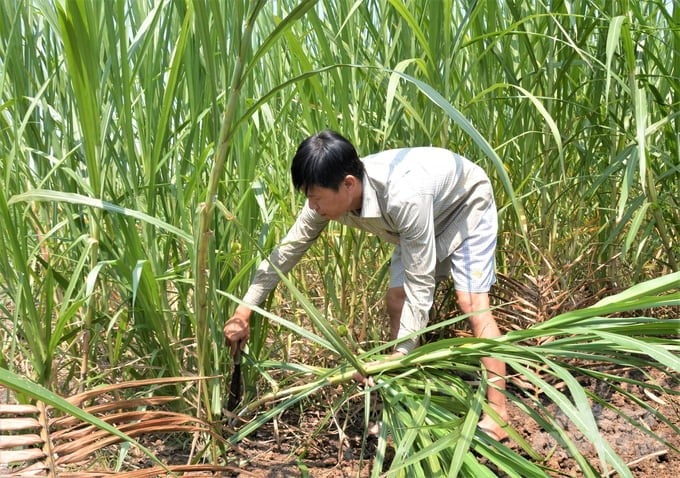November 27, 2025 | 16:09 GMT +7
November 27, 2025 | 16:09 GMT +7
Hotline: 0913.378.918
November 27, 2025 | 16:09 GMT +7
Hotline: 0913.378.918

Farmers take advantage of livestock waste to raise earthworms and compost organic fertilizer, helping to reduce costs in the next livestock chain. Photo: Trung Chanh.
In 2022, the Agricultural Extension and Agricultural Services Center of Hau Giang Province was allocated funding to implement the "Circular Agricultural Production Chain" model to help farmers develop economically and environmentally sustainable livelihoods. The deployment area includes seven units: Vi Thuy district, Chau Thanh district, Long My district, Phung Hiep district, Chau Thanh A district, Long My town, and Vi Thanh city.
Engineer Nguyen Hoang Chien, technical officer of the Agricultural Extension and Agricultural Services Center of Hau Giang Province in charge of the model, said: The "Circular Agricultural Production Chain" model includes many crop and livestock objects such as cow, goat, pig, fish, eel, frog, chicken, duck, earthworm, elephant grass, fruit tree, vegetable, ornamental plant, etc. Depending on conditions, participating households can choose suitable crops and livestock but must ensure a circular process, taking maximum advantage of waste and by-products as input raw materials for the next object.

Hau Giang farmers take advantage of organic fertilizer composted from livestock waste to grow and harvest grass as green food to serve livestock farming, creating a closed circular chain. Photo: Trung Chanh.
Accordingly, farmers take advantage of pig, cow, and goat manure to raise earthworms, compost biogas, and compost organic fertilizer; harvest earthworms as food for aquaculture and poultry farming and organic fertilizer for crops; utilize substandard fruits (jackfruit with black fibers) to feed goats and fish, etc. Thanks to that, it helps farmers save on input costs and lower production costs.
According to assessments, the "Circular Agricultural Production Chain" model is sustainable with a combination of input and output, taking advantage of waste as input raw materials to reduce production costs and prices and increase profits.
Specifically, the profit margin on the main object of cows reaches 16%, goats of approximately 29%, and pigs of over 42%. However, because cows are large animals and have a relatively long reproductive period, profits will be high from the third generation onwards.
Not only does it bring economic efficiency, but the circular agricultural production model also reduces pollution, better protects the environment, and ensures food safety and hygiene for products.
Translated by Thu Huyen
/2025/11/26/4909-2-154329_878.jpg)
(VAN) Pearl grouper farming in HDPE cages not only delivers economic efficiency but also contributes to protecting the environment, creating jobs, and promoting marine-based experiential tourism.

(VAN) The model of making a living under the forest canopy through the agroforestry system in Van Son commune, Bac Ninh province, is expected to generate an annual income of approximately VND 30 million/ha.

(VAN) Many enterprises in Can Tho are harnessing natural energy and reducing greenhouse gas emissions in their production processes, thereby contributing to the promotion of a sustainable green transition.
/2025/11/24/3536-2-112800_176.jpg)
(VAN) Dong Nai now has tens of thousands of hectares of forests certified for sustainable management, and this area will continue to be expanded in the coming period.

(VAN) Vinh Ha hamlet (Dai Xuyen commune, Hanoi) is shifting away from small-scale farming as households adopt bioscurity into their breeder chicken models.

(VAN) Heavy rains make aquatic species more vulnerable to disease. Proactive water management and high-tech systems help farmers prevent outbreaks and protect yields.

(VAN) Greenhouses are shifting production mindsets in Binh Lu commune, enabling farmers to ‘weather the sun and rain’ and secure stable vegetable harvests throughout the year.